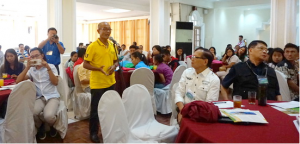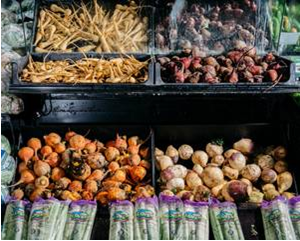|
Together and Stronger Against Antibiotic Resistance
Wednesday, 2017/08/30 | 08:51:17
|
|
FAO Vietnam 02/08/2017
Figure: National Action Plan for management of antibiotic use and control of antibiotic resistance in livestock production and aquaculture 2017- 2020
Ha Noi – The Ministry of Agriculture and Rural Development (MARD) launches the Viet Nam National Action Plan for management of antibiotic use (AMU) and control of antibiotic resistance (AMR) in livestock production and aquaculture 2017 – 2020. With financial support from the United States Agency for International Development (USAID), this plan was developed in collaboration with the Food and Agriculture Organization of the United Nations (FAO) to guide the actions of the agriculture sector, governed by agencies under the Ministry of Agriculture and Rural Development (MARD), and complement the Ministry of Health national action plan on combating drug resistance in the period from 2013 – 2020. The implementation of this National Action Plan will help mitigate the public health risk of AMR arising from antibiotic usage in livestock production and aquaculture in Viet Nam.
The National Action Plan establishes five specific objectives, including: 1) Review, revise and enforce policy implementation and governance related to AMR and AMU in livestock production and aquaculture; 2) Increase awareness on AMU and the risk of AMR occurrence among food and agriculture professionals, producers and consumers; 3) Implement good practices in animal treatment, animal feed production, livestock husbandry and aquaculture; 4) Monitor AMR occurrence, antibiotic residues, AMU in livestock production and aquaculture; and 5) Facilitate inter-sectoral collaboration in AMR management.
“In order to effectively implement the National Action Plan, the Ministry of Agriculture and Rural Development recognizes the importance of coordinated actions not only among departments in MARD but also with Ministry of Health, Ministry of Industry and Trade, Ministry of Natural Resources and Environment and Provincial People’s Committees. We would like to call for the cooperation and technical and financial assistance from international organizations, research institutes and the private sector to join our efforts in reduction of AMU and mitigation of AMR threats. Together we are stronger against AMR” Vice Minister Vu Van Tam, Ministry of Agriculture and Rural Development, stated.
Antibiotics can kill or inhibit the growth of micro-organisms such as bacteria, fungi or protozoa. They have been extensively used in recent decades and allowed us to achieve extraordinary improvements in human and veterinary medicine. Being an essential tool to control infectious diseases, they also contributed to the improvement of food security, food safety and animal welfare. However, the efficacy of antibiotics has been hampered by the development of resistance among bacteria originating from humans, animals, food and the environment. Infections with antibiotic resistant bacteria lead to treatment failures, worse clinical outcomes and deaths.
“Launching a National Action Plan is a very important step, but its success depends on effective implementation, on compliance, and when necessary on enforcement. Actions must be based on the best evidence, consistent with international practices” said Mr. Craig Hart, Deputy Mission Director of the United States Agency for International Development. About Antimicrobial ResistanceAntimicrobial resistance refers to micro-organisms including bacteria, fungi, and parasites that have acquired resistance to antimicrobials such as antibiotics. Antibiotics are being used in animals not only for treatment, but also for disease prevention and growth promotion. Micro-organisms can develop antibiotic resistance and move between food-producing animals and humans by direct exposure or through the food chain and the environment. Without effective antibiotics, prevention and treatment of infections and illnesses of humans and animals become much harder to treat. Common surgeries become much more dangerous and untreated infections lead to longer hospital stays, higher medical costs, and increased mortality. Antibiotic resistance can be transmitted through food which makes it a food safety problem as well. For more information:
Department of Animal Health
Emergency Centre for Transboundary Animal Diseases (ECTAD) |
|
|
|
[ Other News ]___________________________________________________
|


 Curently online :
Curently online :
 Total visitors :
Total visitors :
(46).png)



















